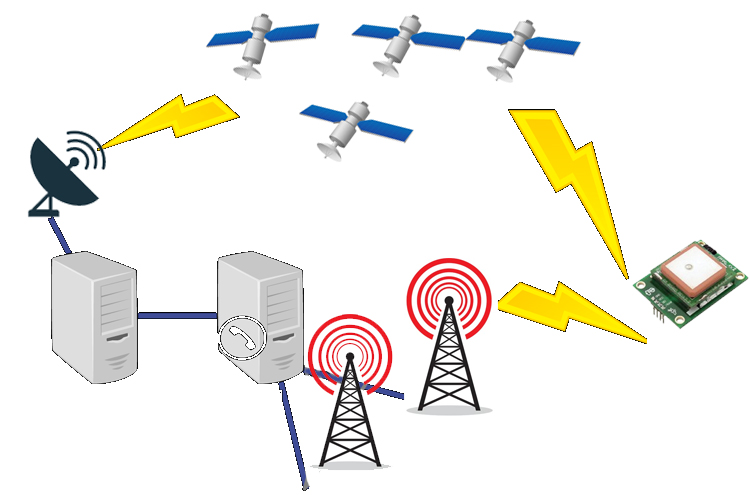Assisted GPS, sometimes known as Augmented GPS (aGPS/A-GPS) is the technology of improving the performance for obtaining initial location data from satellites.
The initial startup performance of obtaining a satellite signal lock is often referred to as Time to first fix (TTFF).
AGPS takes assistance from mobile cell towers to reduce TTFF.
Mobile towers have GPS Receivers which are continuously receiving location data from GPS satellites.
This data is stored, and kept updated in real time using to then serve to additional devices that are compatible.

The typical advantages of aGPS are as follows;
- Faster location acquisition
- Less processing power thus saves battery.
- Indoors location acquisition
Assisted GPS can be placed into two categories:
- Mobile Station Based (MSB):
This information is used to acquire satellite lock faster.- Mobile stations can supply satellite orbital data or almanac of the GPS satellites to the GPS receiver.
This orbital data points the GPS receiver in the right direction for where to look for satellite acquisition. - The network can provide precise time.
- Mobile stations can supply satellite orbital data or almanac of the GPS satellites to the GPS receiver.
- Mobile Station Assisted (MSA):
MSA calculates the position by using information from the GPS receiver.- The device captures part of the GPS signal, with the approximate time it was in that position.
This part of the signal is relayed to the server to then be processed later into a position. - The assistance server maintains strong satellite signals and powerful hardware for processing. As a result, it can compare the fragmentary signals relayed to it.
- Accurate coordinates that are surveyed for the mobile network site towers.
This allows increased knowledge of local ionospheric conditions and various other conditions that are affecting the GPS signal, rather than just the GPS receiver alone.
As a result, an improved calculation of position which is precise.
- The device captures part of the GPS signal, with the approximate time it was in that position.
Additional benefits within mobile station assisted implementations is that there is less strain on the GPS receiver hardware, as the additional processing and software is offloaded.
A typical agps enabled device will use a data connection, whether it be internet or other data, to contact the assistance server for the aGPS information.
If the device has functioning autonomous GPS, it may use only GPS to obtain location data.
Not using aGPS can often be slower for the Time to first fix, but has the benefit of not requiring a mobile network.
Therefore the device is able to work beyond mobile network range and without incurring fees for data usage.
Some A-GPS enabled devices do not have the ability to revert back to autonomous or standalone GPS.
Many modern mobiles phones combine aGPS with other location services, including wifi assisted GPS, and mobile network tower mulitlateration
High-Sensitivity GPS is an technology that can address multiple of these issues in a way that does not require any additional infrastructure.
On the other hand, unlike some forms of aGPS, high-sensitivity GPS cannot provide a instant GPS signal lock fix when the gps receiver device has been switched off for some time.
